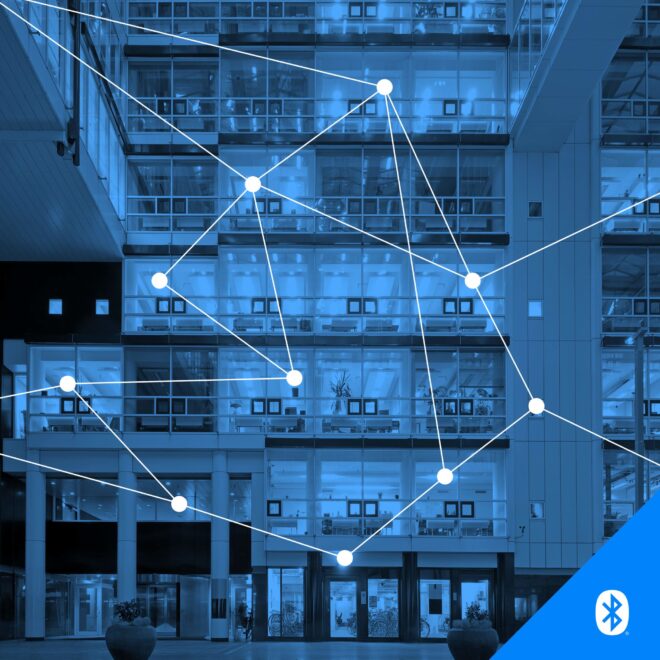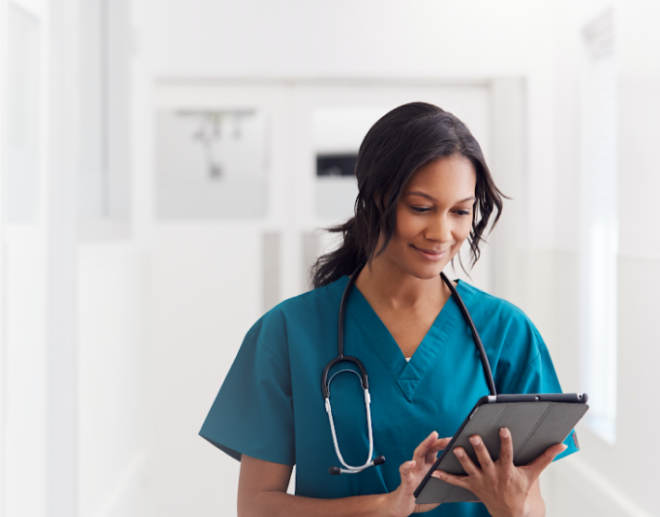After months of lockdown, and some US states opening and then reclosing due to increasing COVID-19 case numbers, many questions remain about how we can move forward safely. We are all anxious to return to business as usual, but until vaccines are widely distributed, sanitization, social distancing, and strategies to manage the pandemic are likely to be with us for the foreseeable future.
We’ve faced business interruption and school closures since March. Regularly scheduled programming – sports, concerts, visits to museums – have been traded in for infrequent trips to the grocery store and, if you’re lucky, an evening in a friend’s back yard sitting six feet apart and wearing a mask.
The health of everyone in our society should remain the primary rationale for making reopening decisions. However, the economic impact of closures to or restrictions on businesses and schools is also a driving force behind the need for safe reopening solutions.
According to a new Pew Research Center survey, overall, one-in-four adults have had trouble paying their bills since the coronavirus outbreak started. The restaurant industry in the US alone saw an estimated 8 million jobs lost in the first few months of the pandemic, and, around the world, people are more negative about the economy amid COVID-19 than during Great Recession.
Everyone is looking for a middle ground to get the economy moving and keep everyone safe. Companies across the world are turning to Bluetooth® technology in the hopes of doing just that – adapting existing infrastructures to offer new solutions that will help us return to the activities we know and love while continuing to take COVID-19 precautions seriously.
Why Bluetooth?
The COVID-19 pandemic is transforming the way we work, gather, and live. Facilities rely on patrons and staff to comply with COVID-19 safety measures like mask-wearing and regular handwashing. Still, they must do their part to help minimize the spread and enable safe reopening. And technology can be a cost-effective measure in doing so. The ubiquity and flexibility of Bluetooth® technology – in our phones and devices – combined with the existing infrastructure in many public spaces means Bluetooth technology is particularly effective in helping us balance the scale between safety and normalcy.
“Bluetooth® technology is one of the few technologies available that has the right combination of technical features, economies of scale, and developer ecosystem to take on the challenge of helping to determine where COVID-19 is in real time around the world.”
– Paul Elvikis, Laird Connectivity
Developers, solution providers, facilities managers, property owners, and even government agencies are turning to Bluetooth technology to implement innovative solutions that help manage the spread, accelerate reopening efforts across the globe, and enable safer treatment of patients during the COVID-19 pandemic and future disease outbreaks.
Let’s look at the three primary ways Bluetooth technology is being used to support reopening efforts and help curb the spread in a post-COVID-19 world.
Safe Return Solutions
Offices, factories, schools, stadiums, and other large venues around the world are looking to Bluetooth® technology to power safe return solutions to help them take every reasonable precaution to reopen or continue to operate safely in this new reality. Employers are investing in health response infrastructures that are keeping employees and visitors safe and ensuring business continuity in the short term, while also enabling additional smart building applications over time that generate efficiencies and ROI in the post-COVID-19 world.
Hygiene Management
Maintaining good hygiene management is key to warding off the virus. For staff who come into contact with many people and touch a lot of surfaces, practicing ongoing hand sanitation is a must to minimize infection. While employers can place hand sanitizer in convenient locations in the hopes that staff will use them, they cannot guarantee that their employees will take the necessary precautions.
Facilities are leveraging Bluetooth® technology to meet increased building sanitization requirements and enforce hygiene compliance to minimize the risk of transmission. Use-based sanitization solutions help ensure that shared resources, such as tools and hot desks, and common areas, such as kitchens and conference rooms, are disinfected in a more timely and efficient manner, keeping occupants healthy while also helping facilities prioritize cleaning resources and manage the cost of complying with new levels of cleanliness. Bluetooth enabled hand sanitizing stations located in shared office spaces can help monitor and encourage staff usage each time they enter or exit the room.
Occupancy Management
A year ago, staying six feet apart at a sports stadium, concert hall, or even a commercial office would have been impossible. People sit or stand shoulder to shoulder and they gather in hallways and entryways as crowds attempt to come and go at the same time. But, as we adjust our behavior and as businesses develop strategies for the future, Bluetooth® technology can help enforce social distancing and manage occupancy density.
Commercial buildings are rapidly adopting a variety of Bluetooth enabled occupancy management solutions designed to help prevent the spread of COVID-19. This technology can help building managers more closely monitor and control the number of occupants at any given time in any given area and help building occupants adhere to social distancing requirements for indoor environments.
Bluetooth enabled proximity warnings remind employees and visitors to maintain safe distances to reduce the risk of viral transmission. Bluetooth wayfinding applications and visitor-flow monitoring solutions can help guide workers and visitors through buildings by the safest routes. Plus, understanding movement patterns can help building managers identify potential high-risk areas and avoid congestion before it happens.
Bluetooth® occupancy sensors are anticipated to grow at a CAGR of 110% between 2020 and 2026, reaching 6 million annual shipments by 2026.
– Source: ABI Research
![]()
FEATURED INNOVATION
COVID-19 Pandemic Response Solutions
See what the Bluetooth® community is doing to confront the challenges of our new normal and help pave the road to recovery.
Safe Treatment Solutions
Medical practitioners and facilities are embracing Bluetooth® medical devices and solutions for diagnosis and treatment to minimize exposure and improve the quality and efficiency of patient care. Bluetooth technology is enabling safer in-facility patient diagnosis and monitoring and improved remote monitoring and in-home care, as well as safer facility management within healthcare environments.
“Location-based services enable hospitals to save lives and make the facilities safer for both staff and patients.”
– Fabio Belloni, Quuppa
Safe Facility Management
Hospitals and healthcare facilities are implementing Bluetooth® Location Services solutions to better manage exposure risk by geofencing critical areas, routing patients and staff to optimized paths, and monitoring hand-hygiene stations to help enforce staff compliance. Bluetooth safe facility management solutions are also being deployed to track vital assets including code carts, ventilators, wheelchairs, and other medical equipment to help provide patients the care they need when they need it.
CARECOM, an IoT solutions provider for healthcare facilities, is one innovator that has developed a system to monitor hand-hygiene compliance using Bluetooth technology. The CARECOM monitoring system uses sensors to detect when a hand sanitizer is pumped and transmits a Bluetooth signal to locators to count hand-sanitization instances among users. Simple, yet effective, systems like this one can be used by nurses in hospitals but could also be repurposed for broader use for employees in an event or office space. According to ABI Research and the University of Fukui Hospital, Japan, Bluetooth hygiene management solutions helped drive a 300 percent increase in hand hygiene compliance.
Remote Patient Care
A fast-growing number of Bluetooth® enabled medical wearable devices including connected blood pressure monitors, continuous glucose monitors, pulse oximeters, and even asthma inhalers are helping administer medication and transmit critical information securely from patients to providers. Ongoing remote patient monitoring using Bluetooth technology is helping patients return home and isolate themselves to continue their recovery without compromising the care they receive.
Safe Patient Diagnosis and Monitoring
Individuals suffering from a communicable disease require continuous monitoring of their vital signs, including core body temperature, heart rate, respiratory rate, and blood oxygen saturation. By minimizing the need for frequent routine patient checks, Bluetooth® connected health devices are helping reduce the possibility of cross-infection and enabling nursing staff and physicians to sustain care while maintaining an appropriate distance.
Exposure Notification Systems
Typically deployed by government health agencies, public Exposure Notification Systems (ENS) use Bluetooth® technology already embedded in smartphones to notify people when they have been in close contact with someone who was later diagnosed with COVID-19 or another infectious disease. The Exposure Notification System created jointly by Google and Apple is a well-known example of an ENS.
The Bluetooth Special Interest Group (SIG) is creating a specification that will establish a standardized method for adding support for wearable devices while preserving the same privacy and security protections of the ENS. By extending an ENS to include wearables, such as wristbands, it can better address population groups where smartphone usage remains low, including children in primary school and older adults living in care facilities.
“Bluetooth® technology is the best solution available today for contact tracing and other safe-return solutions. It is reliable, easy to deploy, data privacy friendly, and available on 100% of smartphones worldwide. It is no wonder Apple and Google also chose Bluetooth technology for their contact tracing API and we fully agree.”
– Ege Akpinar, Pointr

Exposure Notification and Digital Contact Tracing
Public Exposure Notification Systems, as well as private, digital contact-tracing solutions powered by Bluetooth® technology, are playing a critical role in containing the spread of COVID-19. By notifying people who have come in contact with an infected individual, determining the length of those interactions, and preserving anonymity throughout the process, ENS and digital contact-tracing solutions help ensure that enterprises and individuals can take the appropriate measures to minimize further spread without compromising employee privacy. Each notification allows employers to react quickly to protect their staff and keep their business operational.
In this way, Bluetooth technology is helping enterprises and schools respond quickly and confidently in the case of infection, enabling them to make intelligent decisions on preventive measures without resorting to building-wide shutdowns. Pointr, Kontakt.io, and Estimote are just a few companies leveraging Bluetooth® technology to solve this challenge and increase safety in workplaces and other venues.
The Next Normal
We are still a long way away from returning to pre-pandemic normalcy. Though technology is no substitute for testing, social distancing, or wearing personal protective equipment when appropriate, the Bluetooth® member community is doing its part to confront the challenges of our new normal and help pave the road to recovery. Using Bluetooth technology, we can take additional precautions to help quell the virus and prioritize safety as we open our schools, workplaces, and other public venues. Bluetooth technology offers the flexibility necessary to build accessible and scalable solutions that can serve us now and in the future.
“Bluetooth® technology is the go-to choice for solutions aimed at facilitating the reopening of public venues for a number of reasons. Bluetooth technology’s unique combination of capabilities helps it to deliver a value proposition unmatched by any other medium — open standards, low energy, low cost, and very wide adaptation.”
– Rom Eizenberg, Kontakt.io
Learn more about key Bluetooth technology uses cases that will help pave the way for COVID-19 recovery.
![]()
FEATURED INFOGRAPHIC
Extending an ENS to Support Wearable Devices
See how an Exposure Notification System can better address population groups critical to managing a pandemic by supporting wearables such as wristbands.























